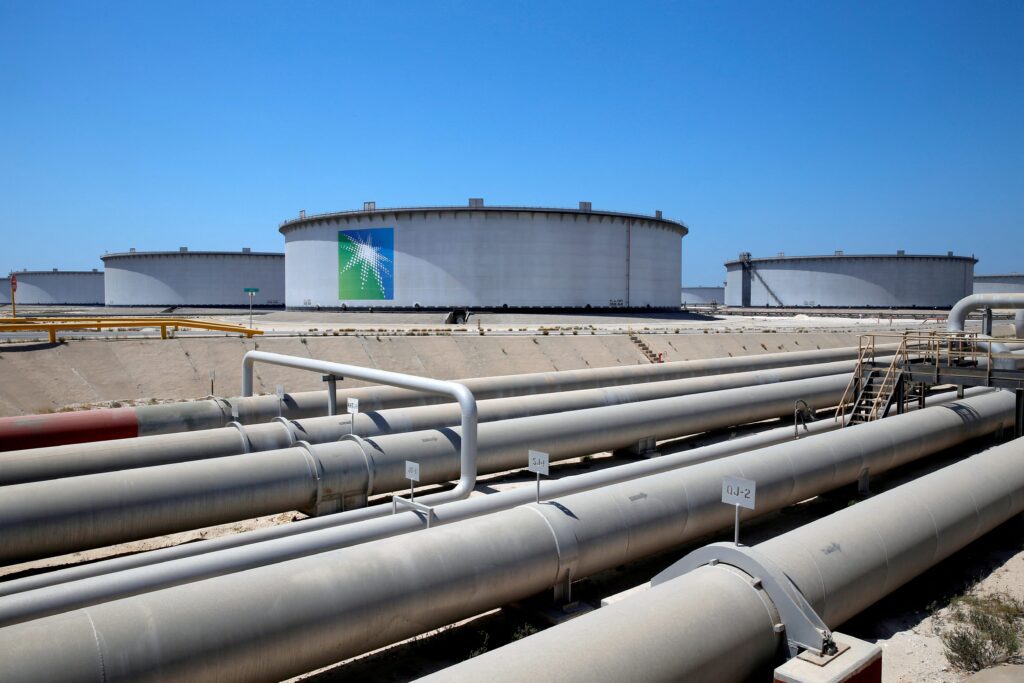Saudi Aramco July oil price cut has grabbed attention in the global energy world as the company announced a noticeable reduction in official selling prices for crude oil deliveries to Asia in July. This move highlights how shifting supply and demand, economic concerns, and global competition affect oil pricing. In this article, we explore what the price cut means for Saudi Aramco, Asian buyers, and the broader oil market.
What is Saudi Aramco’s July oil price cut?
Saudi Aramco, the world’s largest oil producer, publishes official selling prices (OSPs) each month. These prices set a benchmark for many buyers and traders, especially in Asia, which is one of the biggest markets for Saudi crude.
For July, Aramco lowered its OSP for all its main crude grades shipped to Asian countries. The price reductions range between $1.50 and $3 per barrel depending on the crude grade. For example:

- Arab Light crude prices were cut by about $3 per barrel.
- Arab Medium and Arab Heavy grades saw smaller cuts between $1.50 to $2.50 per barrel.
These price changes are part of Aramco’s strategy to remain competitive and respond to global supply-demand trends.
Why did Saudi Aramco lower prices for Asia?
Several key factors have pushed Saudi Aramco to lower oil prices for the Asian market in July:

1. Supply outpaces demand growth
Currently, the global oil market is facing a situation where supply exceeds demand growth, especially in Asia. Major economies such as China and India, which are top oil consumers, have shown signs of slower economic activity. This reduces their expected need for oil imports.
When supply is high but demand growth slows, prices tend to fall. Saudi Aramco’s price cut reflects this market reality, making its oil more attractive despite the weaker demand.
2. Intense competition with other producers
Saudi Aramco competes with other big oil exporters, including Russia, the United States, and Gulf countries. Russia has been increasing its sales to Asia, offering competitive prices. Similarly, US shale producers are active in the global market.
To maintain its market share in Asia, Saudi Aramco needs to price its crude competitively. The July price cut helps ensure that Asian buyers continue purchasing Saudi crude rather than turning to alternatives.
3. High inventory levels in Asia
Asian refiners and stockpilers have been building higher crude inventories. When buyers already have significant stocks, they reduce immediate purchases. This leads to softer demand, encouraging producers like Saudi Aramco to lower prices to stimulate buying.
4. Economic slowdown fears
Concerns about slowing economic growth, particularly in China, are significant. China’s recovery from the pandemic has been uneven, and recent data suggests slower industrial activity and energy use. India also faces economic challenges, including inflation and policy tightening.
With these factors, energy demand growth projections have been tempered, putting downward pressure on oil prices.
What grades of crude oil are affected by the price cut?

Saudi Aramco supplies different crude grades suited to various refinery setups. The July price cut applies to all grades sold in Asia:
- Arab Light: The most popular grade among Asian refiners, used widely for gasoline production. It saw the largest price drop.
- Arab Medium: This grade suits refineries that process medium-weight crude. It also faced a price cut to stay competitive.
- Arab Heavy: Used by refineries configured for heavier crudes. This grade had a smaller cut, reflecting its more limited demand.
The range of cuts reflects both market demand and refinery preferences.
How will the price cut affect Asian oil buyers?
Asian oil buyers such as China, India, Japan, and South Korea will likely welcome Saudi Aramco’s July price cut. The benefits include:
- Lower crude purchase costs: Refiners will pay less for crude inputs, potentially improving refinery margins.
- Possible fuel price easing: Reduced crude costs can eventually translate into lower prices for gasoline, diesel, and other refined products.
- Increased buying opportunities: Lower prices might encourage refiners to replenish inventories or increase production.
However, refiners will also weigh these price cuts against uncertain demand outlooks. They may remain cautious with purchasing until they see clearer signs of sustained demand recovery.
Impact on global oil markets and pricing
Saudi Aramco’s pricing decisions have a wide-reaching impact because it is a leading global oil supplier. The July price cuts reflect broader trends:
- Market balancing act: Producers try to balance supply and demand while protecting revenue. Saudi Aramco’s price cuts signal cautious market optimism but also acknowledge competitive pressure.
- Potential price ripple effect: Other producers might adjust their prices in response to Saudi moves, leading to increased competition.
- Geopolitical context: Political tensions and sanctions affecting other producers, like Russia, also influence pricing strategies and market dynamics.
The July price cut suggests that despite recent oil price recoveries, there are still headwinds facing the market.
What experts say about the price cut

Energy market analysts highlight several points regarding Saudi Aramco’s decision:
- Maintaining market share: Analysts say Aramco is prioritizing long-term customer relationships over short-term price gains to retain dominance in Asia.
- Demand uncertainty: Experts note the cautious tone in pricing reflects uncertainties around economic growth in Asia, especially China’s slower-than-expected recovery.
- Supply considerations: Analysts warn that OPEC+ production policies and US shale output will also influence future prices and pricing strategies.
What does the future hold for Saudi Aramco and Asian markets?
Looking ahead, several factors will shape how Saudi Aramco and Asian buyers navigate the oil market:
- Demand recovery: A sustained economic rebound in Asia, especially China and India, could increase crude demand and stabilize or raise prices.
- Geopolitical risks: Political developments in the Middle East and elsewhere can affect supply and prices.
- Energy transition: Growing investments in renewable energy and alternative fuels in Asia might gradually reduce crude oil dependency.
Saudi Aramco is expected to continue monitoring these factors closely, adjusting prices monthly to respond to market changes.
Conclusion: Why the Saudi Aramco July oil price cut matters
Saudi Aramco’s July oil price cut is a clear signal of the current realities in the global and Asian oil markets. It shows how supply-demand imbalances, competition, and economic uncertainties affect pricing.
For Asian buyers, the cut offers short-term relief and buying opportunities but also highlights ongoing market challenges. Globally, it underscores the delicate balancing act producers face to maintain market share and revenue.
Understanding these dynamics helps businesses, investors, and policymakers prepare for what lies ahead in energy markets.
If you want to stay informed on oil market trends and Saudi Aramco’s pricing moves, watching monthly updates will be essential. These decisions not only affect oil prices but also have broader impacts on energy security and economic growth worldwide.
Read More: RAKBANK SME Confidence Index Reflects UAE’s Small Business Mood














